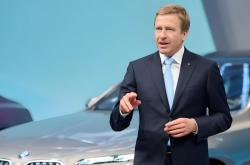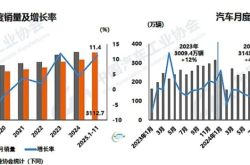Once a 'Tesla Rival', Now Shuttering Its Last Domestic Direct Store!
![]() 10/17 2025
10/17 2025
![]() 584
584


Source: Zhiche Technology
On October 13, 2025, Polestar Automotive shuttered its final direct store in the Chinese market. The closure of the showroom situated at L+ Plaza in Shanghai's Qiantan area marks the complete dismantling of this high-performance electric vehicle brand's offline direct sales system in China, a brand co-created by Volvo and Geely after eight years of fluctuating fortunes in the country.
Polestar China responded by stating that the company is undergoing a "strategic adjustment of its business model in China" to better align with the rapidly evolving consumer demands in the Chinese market. The company stressed that owners' rights and interests will remain unaffected. Additionally, a staff member from Polestar's official service hotline informed reporters that the company is now primarily adopting an online sales model.
In the high-end electric vehicle sector, the experience, test drives, and after-sales services provided by physical stores remain key factors influencing consumers' purchasing decisions. Whether relying solely on online channels can sustain the brand's high-end positioning remains to be validated by the market.

Store Closures: From Expansion Ambitions to Full Retreat
The collapse of Polestar's distribution network in China has been swift and comprehensive.
As recently as the end of 2023, Polestar still operated approximately 55 stores in China. At that time, the company had ambitious plans to double its store count to around 120 by the end of 2024.
It even envisioned expanding its store network to over 180 locations by 2025, covering major first- and second-tier cities across the nation.
These ambitious plans stand in stark contrast to reality. Starting in 2025, the number of Polestar stores began to decline rapidly.
By July of this year, only one store remained in Shanghai's Qiantan. Two months later, even this last store ceased operations.
A property management staff member at the mall described to reporters that the store began gradually removing display vehicles and items in late September, and after the National Day holiday, "there were basically no people left, and the lights were off."

Photo by Yu Jinmin, Beike Finance, The Beijing News

Sales Slump: Global Market Recovery vs. Chinese Market Dismal Performance
Polestar Automotive is mired in a torn-apart dilemma: the brand is experiencing starkly different fortunes in the global and Chinese markets.
In the first nine months of 2025, Polestar's global retail sales reached approximately 44,482 units, up 36% year-on-year. In the third quarter alone, the company delivered about 14,192 vehicles, a 13% increase from the same period last year.
CEO Michael Lohscheller stated, "Sales continued to grow in the third quarter, and we have now sold as many cars as we did in the entire year of 2024."
However, behind this seemingly bright growth picture lies a complete collapse in the Chinese market. In the first half of 2025, Polestar sold only 69 vehicles in China.
By the end of September, the number of registered Polestar vehicles sold in China stood at just 79, with monthly sales frequently recording single-digit figures or even zero.
Beneath the surface of global growth, its overseas performance is far from glamorous. Polestar's overseas growth is essentially a "lopsided" expansion reliant on specific regions and financial support from its parent companies. A staggering 75% of its global sales depend on the European market, posing significant strategic risks. Any policy changes or intensified competition in Europe could cause Polestar to lose its most critical foothold.
A deeper issue lies in its systematic failure in product positioning. In the high-end market, Polestar cannot shake Porsche's dominance; in the mid-range market, it struggles to compete with giants like Tesla and BYD. Its slow product iteration speed makes it nearly impossible to keep pace in the rapidly evolving electric vehicle market.
For a brand barely holding its ground in specific markets but suffering severe financial losses, fuzzy brand recognition, and fragile growth foundations, its overseas journey resembles a difficult sustenance relying on external support rather than healthy organic growth. As global electric vehicle competition enters its second half, Polestar's unbalanced development model faces unprecedented challenges.

Financial Distress: $42.5 Billion in Losses Over 4.5 Years, Debt Ratio of 217%
Polestar Automotive's financial health is deeply concerning. In the first half of 2025, the company reported revenue of $1.423 billion, up 56.5% year-on-year.
However, its net loss for the same period reached $1.193 billion, an 119.4% increase from $544 million in the previous year, with a gross margin as low as -49.4%.
From 2021 to 2024, Polestar's revenue grew from $1.337 billion to $2.034 billion, but its net profit remained in the red, with losses of $1.077 billion, $466 million, $1.182 billion, and $2.05 billion in each respective year.
Over 4.5 years, Polestar's cumulative net loss reached $5.968 billion, exceeding 42.5 billion yuan at the current exchange rate.
More alarmingly, as of the end of the first half of 2025, Polestar's total assets stood at $3.643 billion, while its total liabilities reached $7.909 billion, resulting in a debt-to-asset ratio of 217%, indicating severe insolvency.

Strategic Fluctuations: Fuzzy Positioning and Frequent Leadership Changes
Polestar's struggles in the Chinese market are closely tied to its confused brand positioning and erratic product strategies.
In 2018, Polestar launched its first model, the Polestar 1, a high-performance plug-in hybrid coupe priced at a staggering 1.45 million yuan, with an annual global production limit of 500 units, targeting the ultra-luxury segment.
In 2020, the Polestar 2 was introduced with a starting price of 418,000 yuan for the launch edition, but the price was slashed to 298,000 yuan just a month later.
The Polestar 3, launched in 2023, started at 698,000 yuan, priced higher than the NIO ES8 and Li Auto L9.
That same year, the Polestar 4 brought the price back down to the 300,000-yuan range.
In March 2024, production in China was suspended due to poor sales, relying solely on inventory.
This erratic pricing strategy left Polestar unable to establish a premium advantage in the high-end market while creating internal competition with other Geely-owned brands.
Polestar's management team in China has also experienced a massive exodus. Data shows that Polestar China has changed its CEO seven times in eight years. Under a management structure with decision-making power highly concentrated at the Swedish headquarters, the Chinese team had limited authority to adjust strategies in response to rapid market changes.

A Test of Survival: Can Polestar Overcome Its Chinese Dilemma?
Polestar Automotive has not given up on saving its Chinese market.
In June 2023, Polestar formed a joint venture with Starr International called "Polestar Technology," attempting to leverage Meizu's Flyme Auto system and offline channel resources to address the brand's "climate sickness" (inability to adapt) in China.
However, this partnership lasted only a year and a half before ending. In April 2025, Polestar announced it would regain distribution rights and operate independently in the Chinese market.
To tackle its challenges, Polestar is also seeking financial support. In June 2025, Li Shufu injected $200 million into Polestar through PSD Investment Limited.
At the same time, Polestar plans to produce the Polestar 4 in South Korea and shift production of the Polestar 7 to Europe to counter high tariffs imposed by the U.S. and Europe on Chinese electric vehicles.
Polestar's global story is far from over. With 44,482 units sold globally in the first nine months of 2025 and a 36% growth rate, the brand still has a foothold overseas.
Li Shufu's $200 million investment and Polestar's planned production bases in South Korea and Europe offer a glimmer of hope for the brand.
But in China, as the lights go out in its last store, the performance dream that once rivaled Tesla has quietly faded away.
- End -
Disclaimer:
Works marked "Source: XXX (non-Zhiche Technology)" in this official account are reprinted from other media for the purpose of sharing and disseminating more information. This does not mean the platform endorses their views or takes responsibility for their authenticity. All copyrights belong to the original authors. If there is any infringement, please contact us for removal.





